The Epidemic > Comments on Jeff Passan's The Arm > Chris O'Leary Uses Still Photos
Since every major publication and writer who is familiar with my work and observations seems to place their loyalty to a fellow writer above little things like the truth and the (literal) health of the game of baseball, let me rebut Jeff Passan's more recent and misleading, libelous, and now slanderous, claims about my work, myself.
My comments are based on comments Jeff Passan made in interviews after the publication of The Arm...
Chris O'Leary Uses Still Photos
Jeff Passan's most persistent line of attack is that I use still photos.
The implicit message is that I ONLY use still photos, because he has never mentioned that I also use high-speed video.
My response?
I use all the tools available to me.
First, and whenever possible, I use high-speed video. For instance, the video clips below are from my 2016 trip to Spring Training.
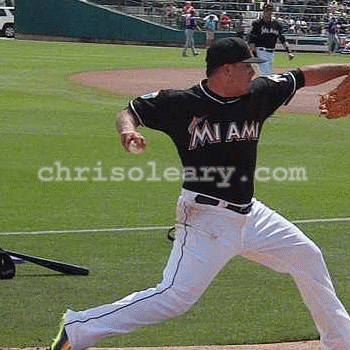
Jose Fernandez 2016
Notice how Jose Fernandez pronates as he goes into foot plant and then holds that pronated position, and points the ball at second base, as his arm rotates up. I would argue that his greater degree of Premature Pronation is why Jose Fernandez threw harder than Jacob deGrom but also broke down faster.
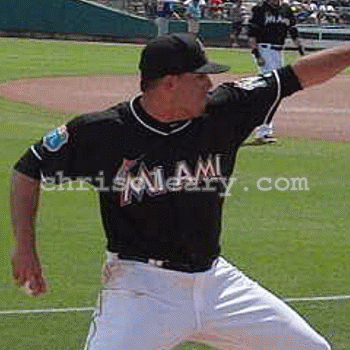
Jose Fernandez 2016
During that game I also obtained footage of Jacob deGrom that confirmed my concerns about his arm action and Timing.
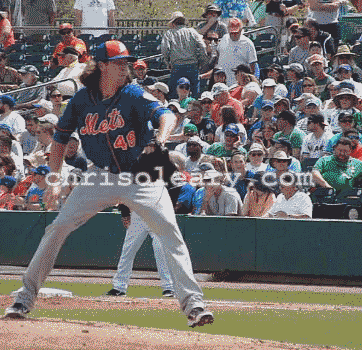
Jacob deGrom
Of course, I'm not just trying to get high-speed video of pitchers with problematic pitching mechanics. A few years ago I was able to video every pitch Mariano Rivera threw during a Spring Training appearance.
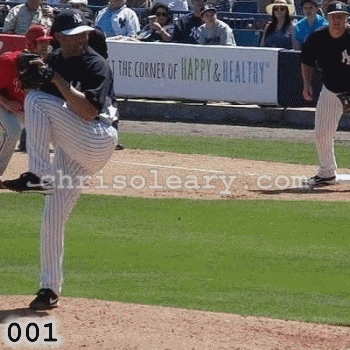
Mariano Rivera 2013
While high speed video is my preferred too for judging Timing, I can't always get close enough to the mound for high-speed video to provide the resolution I need to see movements like Premature Pronation. As a result, I have to base some of my evaluations of pitchers, in part, on evaluations of still photos.
However, and The List demonstrates, still photos are the perfect tool for seeing if pitchers employ problematic movement patterns like Pointing the Ball at Second Base or Keeping the Fingers on Top of the Ball (into Foot Plant) and make the Tommy John Surgery Twist or the Thoracic Outlet Syndrome-T as a result.

Jose Fernandez Tommy John Surgery Prediction
I would hope the fact that I was able to predict Jose Fernandez's Tommy John surgery weeks in advance makes it clear the admittedly limited but still significant power of still photos and explains why I continue to use them to identify certain flaws and movement patterns.
Judging Timing Using Still Photos
In the Youth Baseball Edge podcast, Jeff Passan implies that I rely solely upon still photographs to judge pitchers' Timing.
I don't disagree with (Chris O'Leary) that timing is very important to pitchers and that, if your Timing is off, you can get hurt. But I also don't think that looking at still photographs, that don't tell the whole picture about somebody, you can really make judgements about a player's mechanics.
As I explain above while, because it's the best (in many cases only) tool for the job, I DO use still photographs to look for things like the Tommy John Twist, whenever possible I use video -- my own or what I get off of MLB.com or Youtube -- to judge pitchers' Timing.
That's what I did in my analysis of Matt Harvey's pitching mechanics.

Matt Harvey's Timing Problem
It's also what I did in my analysis of Michael Wacha's pitching mechanics.

Michael Wacha's Timing Problem
If you follow me on Twitter @thepainguy you will notice that I prefer to accompany my Timing-related tweets with either video or at least a series of images that illustrate the Timing problem that I'm talking about. The 2014 post-Tommy John surgery sequence below of Matt Harvey that told me that the root cause of his problems had NOT been fixed and that his shoulder was at risk of failing next.
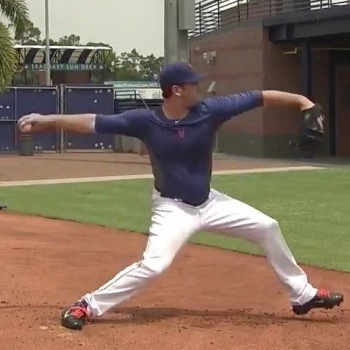
Matt Harvey - Frame 22
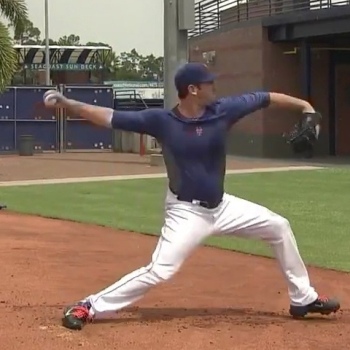
Matt Harvey - Frame 23
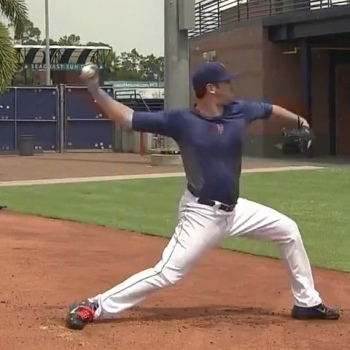
Matt Harvey - Frame 24
The three frames above are all you need to see how Matt Harvey's pitching mechanics -- specifically his Power T, how he then Points the Ball at Second Base and how he Keeps his Fingers on Top of the Ball (into Foot Plant) -- compromise his Timing and explain his injury problems.
I honestly don't understand how Jeff Passan forgot this, given that I had both my iPad and my high-speed camera with me when he talked.
Or is the issue that he just didn't want to mention that?
I would hope the videos above, which have been on my web site for years, make it clear why I label as slander statements like this by Jeff Passan...
He spends a lot of time talking about how kids are throwing too much, but then he bases his injury...his injury guesses, and that's all they are, guesses based on still photographs...
Jeff Passan KNOWS my process relies on video. He's seen me taking and using video at games, but that doesn't fit his narrative, so he tells people otherwise in order to make me look bad.
Which is slander.
Still Talking About the Inverted W
Another one of Jeff Passan's criticisms is that I still talk about the Inverted W.
I do so for two reasons.
First, the Inverted W remains relevant.
As I discuss in The Truth About the Inverted W, Daniel Winkler's Inverted W got his arm shortly after the publication of The Arm. Also, and again as I said in my 2010 interview about Stephen Strasburg...
What the not so durable guys do is they take their elbows back but they also take them up. Now, that's actually painful to do, but it's not that bad in and of itself. The problem is that when you take the elbows back and up, you can end up with a Timing problem.
...and as the picture below of Anthony Reyes demonstrates, the Inverted W can -- and, as I said in 2010, I mean can, not always does -- cause a Timing problem.
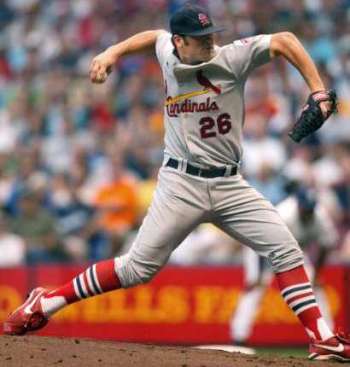
Anthony Reyes
As I discuss in The Truth About the Inverted W, the Inverted W is still creating Timing problems and is still claiming victims.
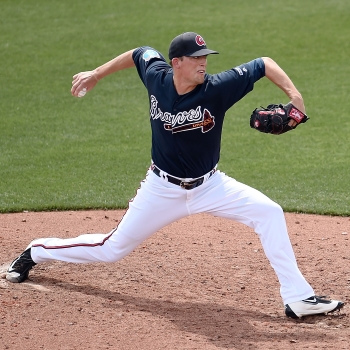
Daniel Winkler
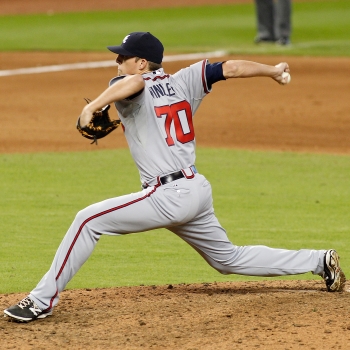
Daniel Winkler
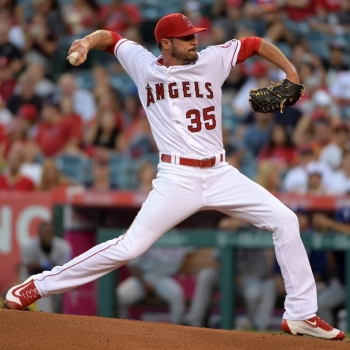
Nick Tropeano

Sonny Gray

Sonny Gray
There's also the fact that people are still searching for the Inverted W. On all of my pieces on which I discuss the Inverted W, I quickly make it clear to people that the real concern is Timing in general and problems like Flat Arm Syndrome in particular.
That's a distinction I've been trying to make clear since 2007 in my analysis of Mark Prior's pitching mechanics and his Inverted W, and despite the efforts of people like Jeff Passan to the contrary.
What's truly tragic is that Jeff Passan's selfish efforts to rehabilitate the reputation of the Inverted W will lead to the tragically completely unnecessary destruction of countless more pitching arms.
And likely lives due to TOS.
Biased, irresponsible journalism has consequences.